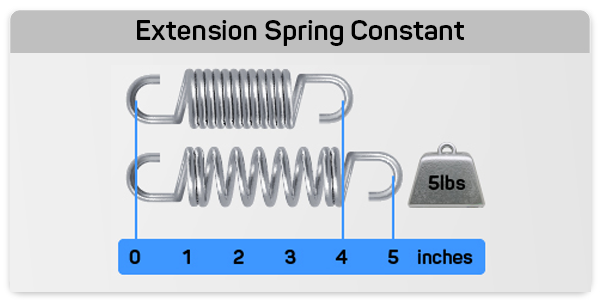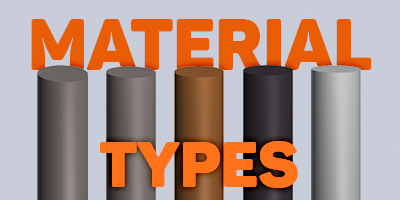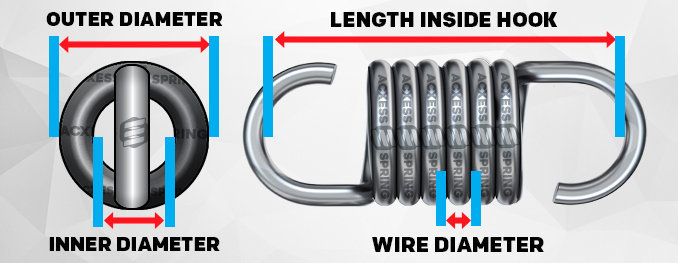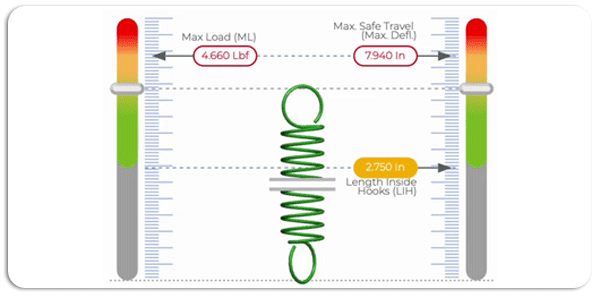Extension Spring Design in Industrial Machinery: The Application of Hooke’s Law
Extension Spring Design in Industrial Machinery: The Application of Hooke’s Law
Introduction
In the realm of mechanical and industrial engineering, extension springs play a pivotal role. These small and often overlooked components are fundamental for the operation and efficiency of a wide array of machines. Their meticulous design, rooted in solid physical principles such as Hooke's Law, is crucial not just for optimal machine function but also for ensuring safety in industrial environments. This article delves into the relationship between Hooke's Law and extension spring design, highlighting its critical impact in industrial machinery, from theoretical foundations to practical design considerations.
Hooke’s Law in Spring Design
Theoretical Foundations of Hooke's Law
Hooke’s Law is more than a formula; it’s the foundation of any spring design. It states that the force needed to extend or compress a spring is proportional to its displacement. In more technical terms, it’s expressed as F = kx. This principle is crucial in spring design, as the spring constant k determines the spring’s stiffness and hence how it will respond under different loads. In industrial contexts where precision and reliability are paramount, understanding and correctly applying this law are vital for creating springs that function efficiently and safely.
Calculation of the Spring Constant
The spring constant, k, is the heart of extension spring design. It dictates the spring's stiffness and therefore how much it will extend under a given load. The calculation of k is a delicate operation that involves considering not only the force and extension but also the spring’s material composition and geometry. An accurate calculation of this constant is crucial; a mistake could lead to a spring that is too weak or too rigid for its intended application, potentially resulting in mechanical failures or even accidents in industrial environments.


Designing Springs for Industrial Applications
Material Selection
Selecting the material for an extension spring is as crucial as the spring design itself. Common materials range from carbon steel to specialized alloys, each offering different properties of strength, flexibility, and durability. This choice heavily depends on the environment in which the spring will operate, the loads it must withstand, and factors like resistance to corrosion and temperature.
Configuration and Dimensions
The configuration and dimensions of an extension spring, such as wire diameter and number of coils, are key to its functioning. These parameters directly affect the spring constant and thus how it will respond under load. Proper design ensures that the spring meets specific load and deflection requirements, which is vital in industrial applications where precision is key.
Customization in Design
In the world of industrial machinery, a “one-size-fits-all” solution rarely exists. Each application may require a bespoke spring design, considering unique aspects like space constraints, specific load requirements, and particular operating environments. Therefore, the design of extension springs often involves a customization process, tailoring each aspect of the spring to the exact needs of its application.




Case Studies in Industrial Applications
Case Study 1: Automotive Industry
In a prominent automotive company, extension springs were designed for a new line of electric vehicles. By applying Hooke’s Law, the engineers developed springs that provided the optimal balance of flexibility and strength, enhancing the vehicle suspension system's responsiveness and durability.
Case Study 2: Medical Equipment Manufacturing
A medical equipment manufacturer utilized Hooke’s Law to design extension springs for advanced surgical tools. The precise calculation of the spring constant ensured that the tools provided consistent performance, crucial for delicate surgical procedures.
Case Study 3: Heavy Machinery
A construction equipment manufacturer faced challenges with their excavator arm springs. By recalculating the spring constant and adjusting the material and design, they achieved a significant improvement in the arm's control and stability, demonstrating the practical implications of Hooke’s Law in heavy machinery.
Tools and Technologies in Spring Design
Using "Spring Creator 5.0"
Modern technology has revolutionized spring design. Tools like Acxess Spring’s "Spring Creator 5.0" enable engineers to design, simulate, and adjust springs with unprecedented precision. This advanced spring design software tool facilitates the visualization and calculation of critical parameters, providing designers with a powerful platform to optimize spring performance before production.
Testing and Validation of Springs
Importance of Testing
Theory and design are just the beginning. Validation through rigorous testing ensures that an extension spring will perform as expected in the real world. These tests must simulate actual operational conditions and challenge the spring under the loads and stresses it will encounter in daily use.
Online Spring Force Tester (OSFT)
The OSFT is an indispensable simulation tool in the testing and validation process. It measures the force and deflection of the spring under various loads, helping to verify that the spring meets design specifications. The precision offered by the Online Spring Force Tester is crucial for ensuring that designed extension springs function optimally and safely in their intended industrial environment.


Design Recommendations
Comprehensive Load Assessment
Understanding all the loads a spring will experience during its lifetime is fundamental. This includes not only maximum loads, but also the type of load (static vs. dynamic) and the frequency of load and unload.
Innovations and Trends in Design
Keeping abreast of the latest innovations in materials and manufacturing processes can lead to more efficient and durable spring designs. Embracing emerging technologies and new manufacturing methods can result in lighter, stronger springs capable of withstanding extreme operational conditions.
Conclusion
Effective design of extension springs for industrial machinery demands a deep understanding of Hooke’s Law, careful consideration of multiple spring design factors, and a rigorous focus on testing and validation. The combination of precise calculations, appropriate material selection, and the use of technologically advanced tools like "Spring Creator 5.0" and the OSFT are key to creating springs that meet the highest performance and safety standards across various industrial applications.





